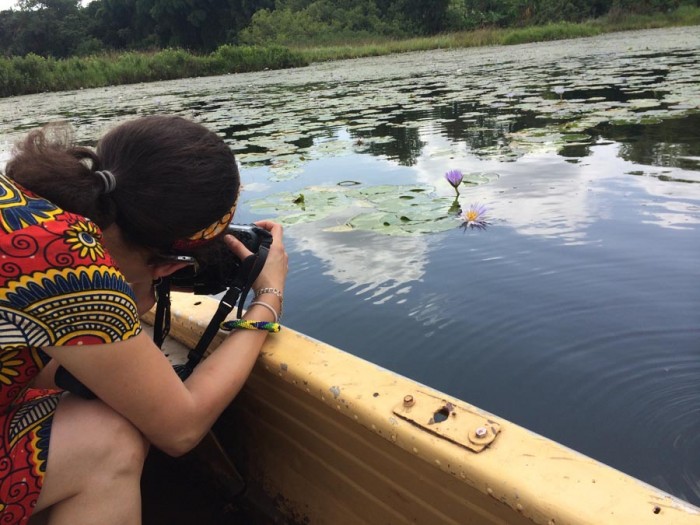July 8th, 2015 by Rachel | Tags: Peace Corps, Photography | 2 Comments »
I have been reading a new book called, “In Defense of a Liberal Education” by Fareed Zakria. As evident from the title, the book discusses eloquently the importance of people acquiring liberal arts education. The author spoke frequently about how humanities can truly prepare us for all kinds of jobs including jobs in computer programing, creating websites and apps, medical research and building bridges. Examples include how the psychology courses at Harvard University influenced the way Mark Zuckerberg design Facebook and calligraphy courses at Reed College influenced Steve Jobs to create the most beautiful and best selling products.
When people ask me “What did you study in college?” and I respond, “Photography,” I often get blank stares or surprises. They then ask me, “But you’re not doing photography full-time. How did you get to where you are today?” Or if I get asked, “Where did you go to college?” and when I respond, “Savannah College of Art and Design,” people then say, “Whoa! But you have nothing to do with art today.”
Photography and art are still very integral to my life today. My fine arts education at SCAD has actually led me to be a Peace Corps Volunteer today. When I was in college, while I did learn how to operate a camera, form compositions, and manipulate images with Adobe Photoshop, I took an extensive number of art history courses including History of Photography, Renaissance and Baroque Architecture, Survey of Western Art History, 20th Century Art History and Treasures of Provence. It was these courses that taught me how to think critically about how the landscapes influence the culture and human’s life and culture itself impacts human’s life. I also learned how art, in particular photography, can be a powerful weapon to change the world. It was the great photographers, Dorothea Lange, Lewis Hines and Eugene Smith. who inspired me to take on the path of pursuing a career in humanitarian work. Dorethea Lange worked with Farm Security Administration and documented the Great Depression. Her photographs helped people better understand the suffering that humans were facing. As her photographs continue to be shown today, people are reminded that we do not want this event in history to be repeated. Lewis Hines was the one who helped end child labor laws as he documented children working in factories and presented his photographs to the government. Eugene Smith documented humans suffering from mercury poisoning in Japan and helped end the use of mercury.
As a result of my education in art history courses and also other liberal arts courses such as Introduction to Anthropology, African American Literature, and Native American History, I learned how to implement my interests in studying social issues and cultural differences in my photography work. In all of my photography courses whether or not it focused on learning how to use Adobe Photoshop, how to photograph black and white or how to use the dark room equipment, I still explored my interests. For example, in my course that focused on learning how to use Adobe Photoshop, I explored the high demands of teachers’ jobs for little pay. In my black and white photography course, I explored the school dances, an American culture phenomenon.

Me during my sophomore year in college with my photographs.
Then also I studied abroad in various countries and spent a great amount of time traveling overseas during my school breaks. It was the time when I learned that my camera is a tool to learn about the life of the locals. It was used to document their life and the landscape. My photographs became my tool to educate the Americans at home about the life outside of their country.
My studies then led me to become interested in pursuing a career in working with people foreign countries and solving issues. This is how the idea of becoming a Peace Corps Volunteer evolved.
An artist is not always someone who spends every hour painting. An artist can be someone who explores various global issues by developing artwork that depict the plights of human’s life in a developing country. Do not underestimate the power of liberal arts education, especially fine arts, as it can truly lead people to take on jobs that are in the greatest need.
Furthermore, photography is still a very important instrument in my Peace Corps service. It’s a tool that allows me to complete Peace Corps’ third goal which is to educate the Americans about the host country. As evident from my blog, my photographs give Americans a window to view the life of people in Cameroon. It also allows me to complete Peace Corps’ second goal which is to educate the host country nationals about the United States and American culture. I brought my photographs of my life in America with me to Cameroon to show Cameroonians how the Americans live their life. Photography also works with Peace Corps’ first goal which is to promote peace and friendship. My camera allows me to make connections with the locals. When I photograph them, I get to know their story and the issues they face on daily basis. I use the newfound knowledge to create projects that would help improve their life.

Me photographing the lilies on a lake in Cameroon. Photo Credit: Alex Buttgenbach

2 Comments
Kay
July 8, 2015 at 4:32 pm
I am so absolutely delighted by your summation of the importance of Liberal Arts education. Your examples are perfect.
Arlene
July 18, 2015 at 5:22 pm
Hi ,
We are a summer program fro deaf high school students. We are studying inspirational people this summer who have worked or lived in Africa to change lives. We will follow your blog this week about your experience in Cameroon.
Perhaps some students will have questions for you!
Thanks
also check out our blog! Thanks